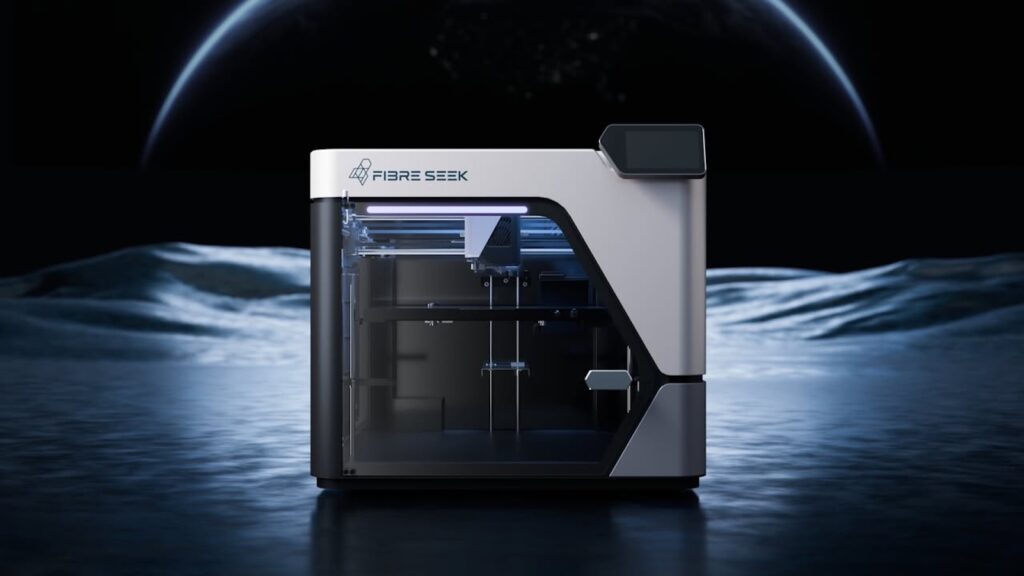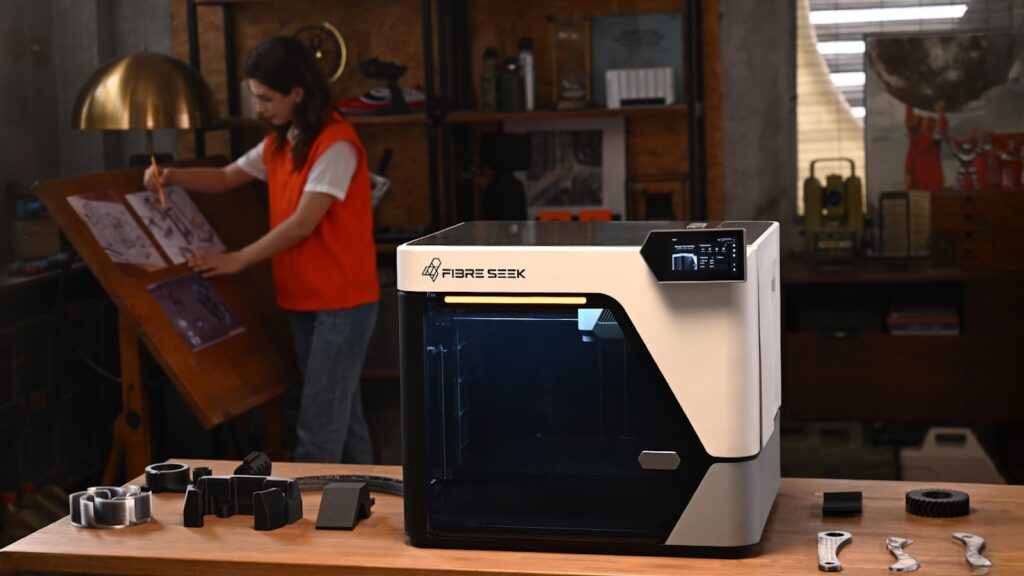FibreSeeker 3 Review: The Desktop 3D Printer That Finally Brings Continuous Fiber Power Home
Description

If you’ve been around the 3D-printing space long enough, you know one truth: most desktop printers promise “industrial-grade performance,” but only a handful actually get close. We’ve seen faster speeds, better slicers, more stable frames — all great. But when it comes to material strength? That’s where consumer printers plateau.
Enter FibreSeeker 3, the first consumer-ready continuous fiber 3D printer designed to bring true composite strength into a compact, affordable machine you can place on a workbench. And honestly? It might be one of the biggest leaps the desktop printing category has seen in years.
<figure class="wp-block-image size-large">
 <figcaption class="wp-element-caption">Image Credits: FibreSeek</figcaption></figure>
<figcaption class="wp-element-caption">Image Credits: FibreSeek</figcaption></figure>Because this isn’t about printing trinkets faster or making prototypes slightly stronger. This is about 900MPa tensile strength, continuous fiber reinforcement, and 2× the strength of aluminum at half the weight — from a printer that costs less than most high-end hobby machines.
So yes, let’s talk about what makes the FibreSeeker 3 such a game-changer.
A Quick Highlights Reel
- 900MPa strength (that’s over 9,000 kg of force per square centimeter)
- Continuous Fiber Coextrusion (CFC) + FFF dual-nozzle system
- Max 500 mm/s print speed
- 300 × 300 × 245 mm build volume
- Three printing modes with color-coded lights
- Smarter Aura Slicer suite
- Compact, affordable, and genuinely accessible
On paper, it’s a beast. But the magic really reveals itself when you understand how it works.
<figure class="wp-block-image size-large">
 <figcaption class="wp-element-caption">Image Credits: FibreSeek</figcaption></figure>
<figcaption class="wp-element-caption">Image Credits: FibreSeek</figcaption></figure>What Makes FibreSeeker 3 So Different?
Most printers try to achieve “strength” with chopped carbon-fiber filament or filled materials. And while that does help a bit, chopped fibers behave nothing like real structural reinforcements. It’s like comparing random gravel to a solid steel beam.
The FibreSeeker 3 doesn’t do chopped fibers.
It embeds continuous fiber strands — real, uninterrupted fibers — into the thermoplastic as it prints.
This is Composite Fiber Coextrusion, or CFC, the technology that makes industrial printers cost $10,000–$20,000. Here, it’s distilled into a consumer-grade machine that doesn’t require specialized training or proprietary workflows.
Layer-by-Layer Strength Placement
The CFC nozzle lays down full-length fibers only where your part needs them:
This means the part is strong not just in theory, but in the exact directions it needs reinforcement.
Think:
- drone arms that won’t twist
- robot joints that won’t delaminate
- bike components that stay rigid
- tools that survive actual shop use
- functional prototypes you can abuse
And all on a printer that fits into a studio, garage, or even a home office.
<figure class="wp-block-image size-large">
 <figcaption class="wp-element-caption">Image Credits: FibreSeek</figcaption></figure>
<figcaption class="wp-element-caption">Image Credits: FibreSeek</figcaption></figure>Dual Nozzles, Triple Modes — And the Visual Language to Match
One of the smartest touches on FibreSeeker 3 is its three-mode system, each represented by a bright color on the printer.
You can see what mode you’re in instantly, even across the room.
Green Mode: FFF Only
- For fast, pure thermoplastic printing.
- Up to 500mm/s, which is more than enough for prototypes, housings, jigs, or any non-reinforced part.
Orange Mode: Mixed CFC + FFF
- Think of this as “supercharged FFF.”
- You get standard printing with selective fiber reinforcement where the algorithm believes strength is required.
Best for:
- brackets
- mechanical parts
- RC components
- testing functional ideas before full reinforcement
Purple Mode: Full Composite Dominance
This is your structural mode.
The fiber nozzle takes center stage — creating dense, strategically layered reinforcement that turns your model into a mini carbon-composite part.
The light-coded approach seems small, but it makes workflow feel natural and intuitive, especially for multi-material projects.
Speed and Volume That Feel… Unexpectedly Generous
For a machine with this level of structural capability, I expected build speeds to lag. Instead, FibreSeeker 3 goes up to 500mm/s on its FFF nozzle, putting it in the same speed class as several “fast print” hobby machines.
Combine that with a large 300 × 300 × 245 mm build area — and suddenly you’re printing:
- full drone frames
- gearbox housings
- large mechanical assemblies
- sturdy cosplay parts
- architectural models
- robotics enclosures
And you’re doing it without slicing your project into 4–5 parts just to make it fit. This alone will win a lot of studios over.
Aura Slicer: Zero-Click Precision (Yes, Really)
Slicers are usually the problem, not the solution, especially when composites are involved. You tweak settings, preview fiber paths, realize everything’s wrong, tweak again, re-slice… and repeat. Aura Slicer simplifies that in a way that feels almost unfair.
What it does automatically:
- Calculates fiber pathing
- Distributes reinforcement based on stress zones
- Balances FFF + CFC ratios
- Optimizes strength-to-weight
- Previews composite layers visually
- Reduces operator error
You can still dive in and customize, but the whole point is that you don’t have to. It takes composite printing from “expert-only” to “everyone can do this.”
Who This Printer Is Actually For
The FibreSeeker 3 isn’t just for hardcore engineers. It’s for anyone who wants actual functional strength out of their prints.
For Makers & Hobbyists: Finally — parts that don’t snap mid-test.
Build:
- RC cars
- drones
- camera rigs
- e-bike accessories
- robotics projects
All with real rigidity.
For Studios & Startups: You can rapid-prototype load-bearing components on-site. Structural models, fixtures, functional prototypes — all on the same affordable desktop unit.
For Families & Home Workshops: You don’t need training or industrial experience. Aura Slicer + triple-mode design makes it very approachable.
For small labs & research teams: Its ability to test structural ideas—without outsourcing machining—makes it extremely cost-effective.
Strength, Speed, Price, and Approachability — All in One Machine
There are high-speed printers.
There are big-volume printers.
There are dual-nozzle printers.
There are composite printers.
But historically, you had to pick one or two, and sacrifice everything else — or pay industrial pricing.
The FibreSeeker 3 bends that rule. It brings:
<ul class="wp





